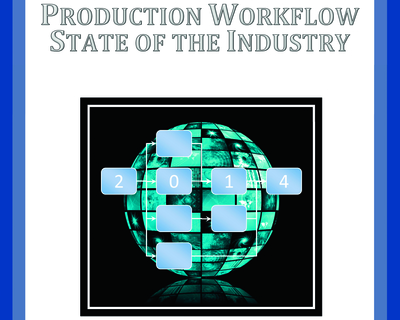PODi, the digital printing initiative, has produced a new research report into attitudes to workflow and automation, based on interviews with around 170 print companies.
How happy are you with the various web to print, workflow automation and MIS implementations you have made within your printing business? According to a study by the digital printing initiative PODi, there is a good chance that you are looking to replace and/or improve it.
The research (titled Production Workflow State of the Industry 2014) found that as many as 90% of printing companies have already invested in these areas, yet perhaps 60% of these are looking at change, for whatever reason. According to the report itself, the implication of this is that workflow automation solutions are not as effective as they need to be. However, Tony Hodgson, who is director of PODi in Europe, sees more of a multi-faceted issue here.
‘We don’t think it is necessarily because they have invested in poor solutions. It’s more likely that they rapidly outgrow their initial systems because of the positive effects that automation can have on developing and expanding their print businesses,’ he said. ‘Also, the rate of technology change in software development is quite high, and so more effective solutions are continually coming to market which make legacy systems seem inadequate.’
The report itself is very much US and North America-centric, with a single UK printer among the 170 print providers who have contributed to it. It is therefore a very ‘broad brush’ in terms of its findings. Does this make it any less relevant to the UK market though? ‘I know a few UK companies that have tried this and that, kept having a go and never really gained any traction. They see web to print as a general concept, and they have it because everyone is talking about it. They would never make decisions about printing technology in the same way. So I certainly think it’s applicable to the UK market too,’ he said.
Further findings of the report are that while more than half of the printers questioned had automated web submission and MIS, there was a significant drop in those who have automated further down the line, to finishing and order fulfilment. Most jobs (up to 80% in fact) are still being produced with manual processes at some stage. In response to this, the report suggests that both software vendors and service providers should apply increased focus on how to automate steps through to order fulfilment.
ROI assessment
A practical development that has come out of this research is the Production Automation ROI Tool – an auditing tool for PODi members that is essentially a very sophisticated spreadsheet that printers can use to go around the production side of their business and do some measurement of the processes involved and the time these take.
‘They can really begin to get a handle on the amount of hours they spend on various aspects of the workflow – file manipulation, archiving, for example – and then look at what the software solutions are capable of doing. They can plug those savings into the tool, make estimates of extra costs like training, and aim to get a ROI calculation that will say that, for example, if they take a system on board with the current processes, they should get full ROI in 18 months. That gives a comfort factor that it should be a profitable investment,’ said Mr Hodgson.
He added that the tool, which is currently being beta tested by some digital printers in the US, should be launched by the time of the main PODi App Forum in the US in February next year. It has been developed by PODi’s own experts, and while it is currently spreadsheet-based, it may well eventually be released as an online application.
As far as the vendors are concerned, Mr Hodgson said they should be mindful of the need to undertake that kind of analysis, while recognising that there are opportunities to help printers get the right solution in place and bridge the gap between earlier generations of software and those that are new today.
The Production Workflow State of the Industry 2014 report is a free resource for PODi members only.





